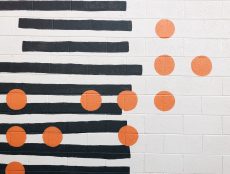
Articles
Editor’s Picks
Why Do Only a Few Law Schools Offer Online J.D.s?
By Henry Kronk
March 21, 2019
Students now have the ability to pursue degrees in numerous fields of study online when other circumstances prevent them from attending a brick-and-mortar institution. Some degrees, like an M.D. or an M.F.A. in dance, are categorically not feasible in an online environment. With others, however, it’s less black and white. One of these would be a J.D. at American law schools.
The ABA Is the Only American Accreditor of J.D. Law Schools
One might ostensibly view a J.D., a degree that allows one to practice law (as opposed to a Masters in Law (LLM), which is widely available online), to be viable via the online modality. In the past few years, a few law schools have begun to offer hybrid programs that allow learners to spend most of their time studying remotely. But there’s a keeper at the gate that has allowed just a few programs through: the American Bar Association (ABA).
In most fields of study, numerous accrediting agencies preside over institutions of higher education, acting as an extension of the Department of Education (DoE) to ensure that schools meet the various standards set out by the federal government.
Among colleges of law, however, there is just one. The ABA has acted as the sole accreditor of American law schools since 1923. They set the academic standard. They decide which law schools can prepare learners to sit the bar and which cannot.
The ABA calls the shots, therefore, when it comes to online J.D. programs. According to Barry Currier, managing director of ABA accreditation and legal education, it originally came down to a question of quality.
Warming Up to the Idea of Online Learning
“There initially was skepticism in the legal education community about distance learning, which mirrored concerns in higher education generally,” Currier said. “eLearning was linked in the minds of many to ‘correspondence’ education, which the ABA Standards had never allowed as a permissible form of legal education.”
But beginning in the early ‘00s, the association began to warm to the idea. They added Standard 306 to their Standards and Rules of Procedures for Approval of Law Schools.
“As technology allowed both synchronous and asynchronous eLearning to be more robust, more interactive and richer in many ways, many in higher education warmed to it, including those in legal education. The first iteration of Standard 306, which regulates distance learning in J.D. programs, was adopted in 2002. For some years, few law schools availed themselves of what the Standard allowed, giving little reason to expand it.”
The standard limited how much of a J.D. program could occur online and when learners could pursue it. Initially, they also couldn’t take any online course until meeting a threshold of credit hours. Soon, however, the William Mitchell School of Law in St. Paul Minn. began experimenting with blended study. In 2015, the institution merged with the Hamline University School of Law and began to offer the first ABA-accredited fully hybrid J.D.
Since, the ABA has allowed four other schools to begin offering similar programs: Southwestern Law School in Los Angeles, the University of Syracuse School of Law, the Loyola University School of Law, and, most recently, the University of Dayton School of Law.
“In recent years, law school have become more knowledgeable about what one can do in a first-rate online learning program,” Currier said. “Faculty interest and expertise have also grown. The Standard has evolved and become more generous in the amount of eLearning that can be done. This is a natural development, providing more opportunity as demand grows.
“As someone with long and broad experience in higher education, I do not see the story of distance learning in legal education as significantly different than in the academy generally. Change is hard, and healthy skepticism is to be expected – indeed, appreciated. While it may appear that legal education trails the market, one can see this skepticism persisting in the broader higher education community. Many online or hybrid/blended degree programs at the types of universities and colleges at which most law schools are located, for example, have been offered through the institution’s school of continuing studies, rather than housed in the substantive colleges and departments of the institution.”
As a reminder, the average cost of the most affordable law schools is $82,773.
Featured Image: Patrik Gothe, Unsplash.









[…] Continue reading this article here […]
[…] have long been used in education. In recent years, game-based learning has become a trend with a broad range of applications. Educators use it across various disciplines to enhance collaboration, help students to grasp a […]
[…] Continue reading this article here […]